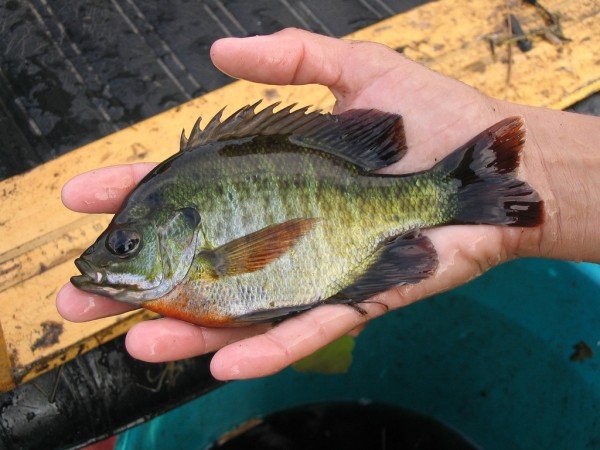When I first learned to fly fish, I practiced the technique on small ponds where I targeted small panfish like bluegill and sunfish. Most anglers trying their hand at fly fishing start this way and then move on to bigger and more challenging quarry, such as trout or carp.
Bluegill may be easy practice when you’re learning how to fly fish, but that doesn’t mean they don’t have something to offer seasoned anglers. Here’s are four ways you can target bluegill on the fly when you’re looking for a little something different this summer.
RELATED: How to Catch Big Bluegills
Monster or Minnow?
One of the best reasons to target bluegill on lightweight fly tackle is the excitement that it brings. Even a smaller panfish can put up quite a fight on a fly rod, making them feel like you’ve just hooked into a smallmouth or bonefish. Furthermore, because bluegill can be caught in quick succession, you won’t get bored easily.
‘Tis the Season
Summer is one of the best times of the year to target bluegill. This is because during the summer months, bluegill tend to collect in sparse schools and move along weed edges and structure near the shore in search of food. To capitalize on this, use topwater or subsurface flies first and watch to see if the ‘gills rise to strike at the surface. If not, move to nymphs or small streamers until the bite picks up. It usually won’t take too long.
RELATED: 4 Reasons to Target Bluegill
Would You Like Flies With That?
Bluegill aren’t generally very picky when it comes to bait; crickets, worms, corn—it all works. While many fly patterns will do the job, some patterns do so just a little better than others. When the water’s darker or you need to work deeper, try nymphs in gold bead-head patterns. A small Wooly bugger will do the trick in pretty much any water, especially in a black or olive color. When you want to work the surface, it’s hard to beat a Chernobyl ant, as these beauties do a great job of creating surface commotion and imitating a wayward insect.
Try Different Presentations
Don’t be afraid to experiment with different retrieves when you’re trying to figure out what works for the bluegill where you’re fishing. ‘Gills are numerous and don’t say no to much, so you can switch from fast to slow retrieves, strips and pauses until you dial in on the right presentation. Bonus Tip: I’ve found that slower retrieves work better with dry flies that stick to the surface, while short, swift strips get me more bites when I’m using streamers.
Photo credit: Flickr








